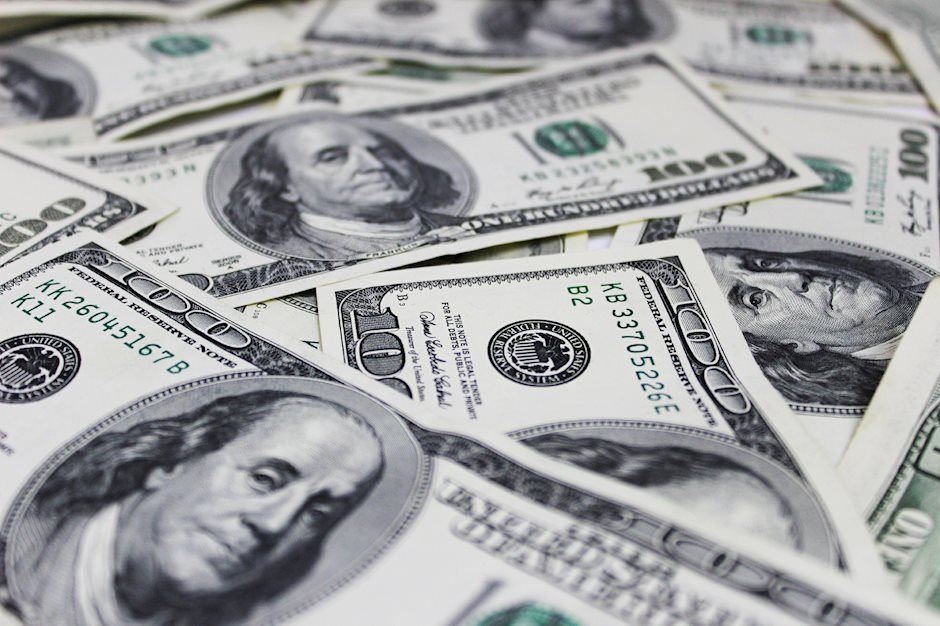US Dollar kicks off the week with the right foot on strong Retail Sales, sour market mood
- DXY Index notes a slight uptick, currently trading near 106.00 mark.
- March Retail Sales exceed forecasts, bolstering bond yields and the US Dollar.
- Fed appears hawkish, adjustments to easing expectations produced Greenback rally last week.

The US Dollar Index (DXY) is currently trading higher near 106.05 on Monday, slightly down from its peak of 106.10 hit last week. Strong economic data continues to favor the hawkish rhetoric from the Federal Reserve (Fed), and the Greenback benefits from rising US Treasury yields. Tensions between Israel and Iran also contribute to a cautious market mood, which tends to favor the US Dollar.
The US economy shows robustness with Q1 growth indicating resilience and rising consumer spending backed by sturdy labour demand. The Fed's stance leans toward hawkishness, adjusting its easing expectations and starting to signal a delay in rate cuts, buoyed by continuous robust growth and persistent inflation.
Daily digest market movers: DXY gains some ground as US Retail Sales surpass expectations
- The US Census Bureau revealed that March's Retail Sales grew by 0.7% growth YoY, which is more than double the anticipated yearly growth rate of 0.3%.
- In reflection of the Fed position, hawkish sentiment continues to dominate as last week officials started to hint at a delay of rate cuts.
- Regarding expectations, the likelihood of a June cut fell to 25%, marking a decline from the previous week's 60%. Concurrently, the probability for a July cut fell below 60%, in stark contrast to its previous full certainty.
- The market now predicts the first cut in September, with only a 75% likelihood of a second cut in December.
- US Treasury bond yields remain high, the 2-year yield stands at 4.94%, the 5-year yield at 4.65%, and the 10-year yield is set at 4.63%.
DXY technical analysis: DXY shows overbought conditions, might correct in the next sessions
The technical indicators on the daily chart reflect overbought conditions through the Relative Strength Index (RSI). This signifies that buyers have been dominating recently, driving up the value of DXY. However, this can often precede a correction if buyers become exhausted.
Simultaneously, the Moving Average Convergence Divergence (MACD) corroborates this leaning, exhibiting rising green bars. Such a pattern usually signals that the buyers have considerable momentum at their back.
Risk sentiment FAQs
In the world of financial jargon the two widely used terms “risk-on” and “risk off'' refer to the level of risk that investors are willing to stomach during the period referenced. In a “risk-on” market, investors are optimistic about the future and more willing to buy risky assets. In a “risk-off” market investors start to ‘play it safe’ because they are worried about the future, and therefore buy less risky assets that are more certain of bringing a return, even if it is relatively modest.
Typically, during periods of “risk-on”, stock markets will rise, most commodities – except Gold – will also gain in value, since they benefit from a positive growth outlook. The currencies of nations that are heavy commodity exporters strengthen because of increased demand, and Cryptocurrencies rise. In a “risk-off” market, Bonds go up – especially major government Bonds – Gold shines, and safe-haven currencies such as the Japanese Yen, Swiss Franc and US Dollar all benefit.
The Australian Dollar (AUD), the Canadian Dollar (CAD), the New Zealand Dollar (NZD) and minor FX like the Ruble (RUB) and the South African Rand (ZAR), all tend to rise in markets that are “risk-on”. This is because the economies of these currencies are heavily reliant on commodity exports for growth, and commodities tend to rise in price during risk-on periods. This is because investors foresee greater demand for raw materials in the future due to heightened economic activity.
The major currencies that tend to rise during periods of “risk-off” are the US Dollar (USD), the Japanese Yen (JPY) and the Swiss Franc (CHF). The US Dollar, because it is the world’s reserve currency, and because in times of crisis investors buy US government debt, which is seen as safe because the largest economy in the world is unlikely to default. The Yen, from increased demand for Japanese government bonds, because a high proportion are held by domestic investors who are unlikely to dump them – even in a crisis. The Swiss Franc, because strict Swiss banking laws offer investors enhanced capital protection.
Author

Patricio Martín
FXStreet
Patricio is an economist from Argentina passionate about global finance and understanding the daily movements of the markets.

















